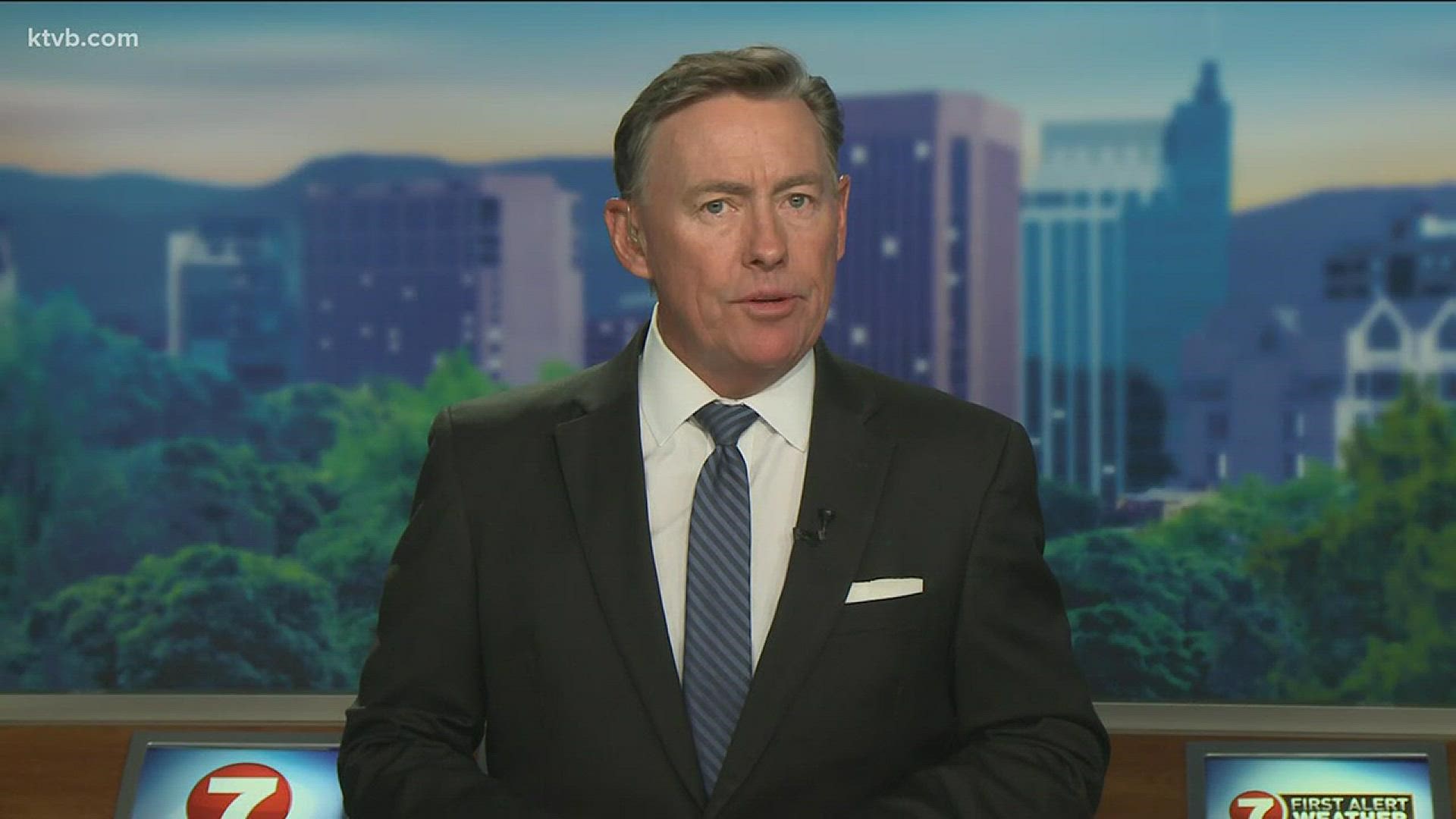BOISE — Growing pains are echoing in an unexpected part of Idaho's capital city.
Blue Valley Mobile Home Park is a fairly big community west of Eisenman Road and south of Gowen Road with 200 manufactured homes. It’s been there for about 50 years.
As the city and county have grown, industrial development has sprung up all around the neighborhood, making it the only residential spot in that part of town. Now, they might get a new next-door neighbor, and residents aren't happy about it.
About 13 acres of sagebrush and tall grass could soon become a 77,000 square foot trucking terminal, office, maintenance building and fuel station. But directly south, sits Blue Valley.
“Our community that’s been here since the 1970s is now being encapsulated by industry,” one resident Bonnie Hardey said.
“By our house will be the fuel island and mechanic shop and then the backside of all the trucks coming in,” another resident who just moved in this year, Kevin Dougherty, said.
When the area was annexed into the city recently, it was zoned light industrial.
“When Boise annexed us in we should have been zoned residential,” Hardey added. “The park came then the industry came. And then the annexation came and that’s when we found out we're light industrial. We didn't get a plan manager to help the community.”
R+L Carriers’ trucking terminal proposal has to go through the City of Boise’s design review process to get approved.
Residents KTVB spoke with said they had no advance notice other than posted signage two weeks before the first design review meeting.
“We didn't know about the project before it hit the design committee. We were not given the rights of a residential area because we’re zoned M1, which is not our fault,” Hardey added. “Not having the heads up, that’s what creates the hostility.”
“I was pretty shocked by it. I knew they were developing out here for more industrial, however I didn't expect this to happen so close to the park,” Donna Auchterlonie, who’s lived at Blue Valley for 10 years, said.
After listening to concerns raised by people who live at Blue Valley, city staff recommended modifications and sound buffering and barriers as conditions of approval in June – and the design review committee agreed. Records show they deferred the approval hearing “to allow the applicant the opportunity to provide additional design input to reduce the sound impact to the adjoining residential area”.
It was deferred to July 11, but at that meeting, the committee deferred the request to August 8 so they have more time to review the noise analysis submitted by the developer.
“They're working with the developer to do what they can to protect this trailer park from the noise and provide some safety mitigation. They've asked the developer to go back and incorporate some sound barriers around 500 feet of the property line around that,” City of Boise spokesman Mike Journee said. “In addition they've asked for some separated sidewalks in order to mitigate challenges with trucks coming in and out of the property so that pedestrians are safe.”
Journee says the committee is working with the developer to mitigate residents’ concerns about safety and sound in order for the impact to be “as small as it can be”.
“The only thing I’m really concerned about is having a barrier,” Auchterlonie added.
“We live right on this street so our concern is the noise and the fumes,” Dougherty added. “We want them to be good neighbors. If they’re going to build there why can't they help us out by building a wall or redesigning their facility?”
The architect for the application had a noise analysis done by Mullins Acoustics, which found new noise won't have an adverse impact on neighbors because there's already pre-existing noise there. The study says: “Noises from the loading dock and occurring inside the warehouse will happen mostly at night and will be indoors. These sounds are expected to be typically much less than the current existing ambient sound levels in the area, but might be occasionally audible. Based on the levels, the warehouse and loading operations are considered to have no adverse impact on the neighbors. When a new noise is comparable to the pre-existing ambient noises, that is generally considered to create no adverse noise impact, and no noise mitigation measures are needed. This is true even if the sounds are audible.”
“It's an area that over time the uses in the area have changed and it is an unfortunate thing. So again, the process will do what it can to protect those folks from that but at the same time it is zoned for industrial use and that’s the use this gentleman wants to use it for.”
And Journee says if the developer meets the requirements from a design review and planning and zoning perspective, then they have a right to do what they want with their property.
“There’s a diverse group of people here that their situation would be drastically changed should this type of industry come next to us. There’s other things they can put in,” Hardey added.
Some residents say they’re not against progress, they just want city planners and leaders to slow down.
“This rapid expansion of the city is detrimental not only to us, it’s going to be another neighborhood that’s low income,” Hardey added. “They are getting too conditioned to approve everything that comes across because they think it’s progress. It’s not progress. You're not preserving the quality of life within city limits.”
Other residents say they just want to feel heard and respected.
“We're not against the progress, we know things have to happen and the only thing we ask for is for respect for our community. We are not any different than any other community. We just live in different kind of homes,” Auchterlonie told KTVB.
If this proposal is approved the decision can be appealed, so we will continue to follow any new developments.

